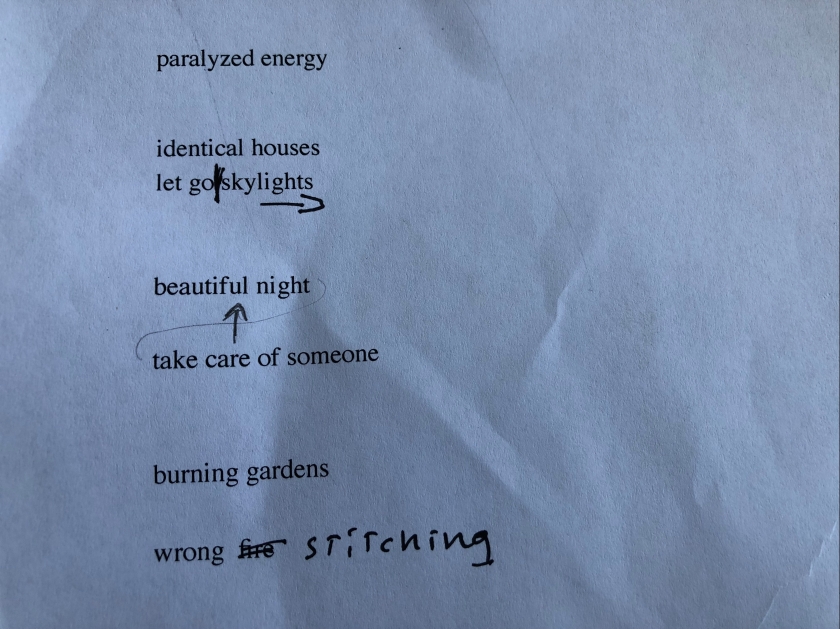My plan is to make one more session transforming dream images into words like I did one year ago (From images to words). The words became poems and then voices. Now the voices are an important part of my art project.
I will extract more words from the new dream images, expand the list of words. Work with the length of each poem; repetitions, rhythm and tone. Probably still with only 10 words.
Working with words is not my comfort zone, but I like having strong restrictions like the number of words. And I do like, that the source of the words cames from my dream images.
But I still feel insecure about it, therefore I yesterday met Christina Reedz Funder. She is a rhetoric, we have been working together before and now she is at Rhetoric and Design at KADK, The Royal Danish Academy of Fine Arts. She’s a good friend, a really good coach and she is familiar with my project.
Christina explained that you have always used systems, ever since the start of writing. Not having a system was low status.
A system could be a specific number of lines or chapters, the words rhymed endings, words accentuation, verses, etc.
In Shakespeare, the morale, the good and the rich talks in a system (verse). The poor, lower class talks without a system.
Not having a system was first seen with the modern.
We talked about that from a creative perspective is a system something that links the intellectual- and bodily language. Several senses are activated.
By using a system you can be lead to coincidence; it’s out of my control, the system takes over. I set the work, myself and the viewer free.
I have to think that a system sets the process free. The system helps me to stop communicating (we talked about graphic design vs. art).
The system gives a voice to the project/artwork.
I can continue to make dogmas/obstructions, make a pool of opportunities, and then using its outcome. My role will be as an editor; contribute to meaning via serendipity.
Our conversation reminded me of my research paper “Chance as a trigger”. The difference was that I had not thought about the subject serendipity in relation to a text.
Christiana encouraged me to put my self into a situation in order to achieve the benefit of serendipity.
She mentioned a Danish poet, Inger Christensen, who wrote with a 2000-year-old system. The sentence does not make sense, it leads the thoughts to a room of sens.
Make a room of sens and mood is the way I want to go, including words written or spoken.
We gonna meet again in 14 days. Thanks, Christina.

























